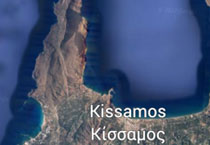|
Home
Page 1/5
Page 2/5
Page 3/5
Page 4/5
Page 5/5 (this page)
|
Looking for the northern ape-man webpage 5/5
Text, photography: Annemieke van Roekel
It is difficult to reconstruct what the Mediterranean region looked like in terms of landscape
six million years ago, when the Trachilos-creature was living. Böhme: "Based on pollen data,
it must have been an open landscape, with lots of grass, savanna-like, and an average temperature
several degrees higher than today. We don't have a lot of data. The Middle East is difficult to do
fieldwork because of political tensions." Due to the good accessibility,
Böhme is currently concentrating on the late Miocene of the Balkans.
Just a matter of biogeography
"It is striking that very few people in the paleoanthropological community, those who are
professionally involved in early human evolution, would consider that the Trachilos tracks were made by hominids,"
Ahlberg says. "This resistance is related to the common idea that hominins evolved in Africa.
However, no one disputes that Miocene hominins lived in Africa. The only question is whether
and when they have had a wider distribution than just the African continent. Both Böhme's work
on bone fossils of Graecopithecus and my work on trace fossils meet a lot of resistance from
the scientific world."
"If we include Southern Europe, the geographic context of this important evolutionary event,
which should have occurred about 8 million years ago, is stretched northwards. In my opinion, you have
to see it as a purely scientific matter of biogeography, and separate it entirely from a political
interpretation in which Europe gets an important role at the expense of Africa. That is not the issue here at all."
Acknowledgment
This publication is partly produced with the support of the VWN Trip Fund under
the management of the Association for Science Journalism and Communication Netherlands.
See www.vwn.nu/over-ons/vwn-tripfonds/. Without this scholarship, I probably
would not have attempted to go to Crete for the third time in corona year 2021,
after cancellations of previous trips. I am very grateful to the VWN for the confidence
they have placed in me and the flexible handling of the deadline.
All photographs are made by the author, unless otherwise mentioned.
References and further reading (in order of date of publication)
- McNutt, E.J., Hatala, K.G., Miller, C. et al. (2021) Footprint evidence of early hominin locomotor
diversity at Laetoli, Tanzania. Nature (2021). Read article online.
- Kirscher, U., El Atfy, H., Gärtner, A. et al. Age constraints for the Trachilos footprints
from Crete. Sci Rep 11, 19427 (2021). Read article online.
- Böhme, M., Spassov, N., Majidifard, M.R. et al. (2021) Neogene hyperaridity in Arabia drove
the directions of mammalian dispersal between Africa and Eurasia. Commun Earth Environ 2, 85.
Read article online.
- Madelaine Böhme, Rüdiger Braun and Florian Breier. Ancient Bones. Unearthing the Astonishing New
Story of How We Became Human. Greystone Books 2020.
- Böhme, M., Spassov, N., Fuss, J. et al. A new Miocene ape and locomotion in the ancestor
of great apes and humans. Nature 575, 489-493 (2019). Read abstract online.
- Various authors. Ancient Kissamos. Subproject "Research trenches, Excavations" of the project
"Collection and transport of sewage works in Ancient Kissamos". Chania 2018.
- Jeff Meldrum, Esteban Sarmiento (2018) Comments on possible Miocene hominin footprints.
Proceedings of the Geologists' Association, Volume 129, Issue 4, p. 577-580.
Read abstract online.
- Robin H. Crompton (2017) Making the case for possible hominin footprints
from the Late Miocene (c. 5.7 Ma) of Crete? Proceedings of the Geologists' Association,
Volume 128, Issues 5 and 6, October 2017, Pages 692-693.
- Gerard D. Gierlinski, Grzegorz Niedzwiedzki, Martin G.Lockley, Athanassios Athanassiou,
Charalampos Fassoulas, Zofia Dubicka, Andrzej Boczarowski, Matthew R. Bennett, Per Erik
Ahlberg (2017) Possible hominin footprints from the late Miocene (c. 5.7 Ma) of Crete? Proceedings
of the Geologists' Association. Read article online.
- News item Trachilos Prints (14 sept. 2017). Read here.
- David R. Begun, The Real Planet of the Apes: A New Story of
Human Origins. Princeton University Press 2015.
- Iliopoulos, G., Roussiakis, S. & Fassoulas, C. (2012) First occurrence of
carnivore footprint with hyaenid affinities from the Late Miocene of Crete (Greece).
Palaeobio Palaeoenv 92, 265-271. Read abstract online.
Page 1/5
Page 2/5
Page 3/5
Page 4/5
Page 5/5 (this page)
Copyright: Annemieke van Roekel
Last update: April 16, 2022
|
